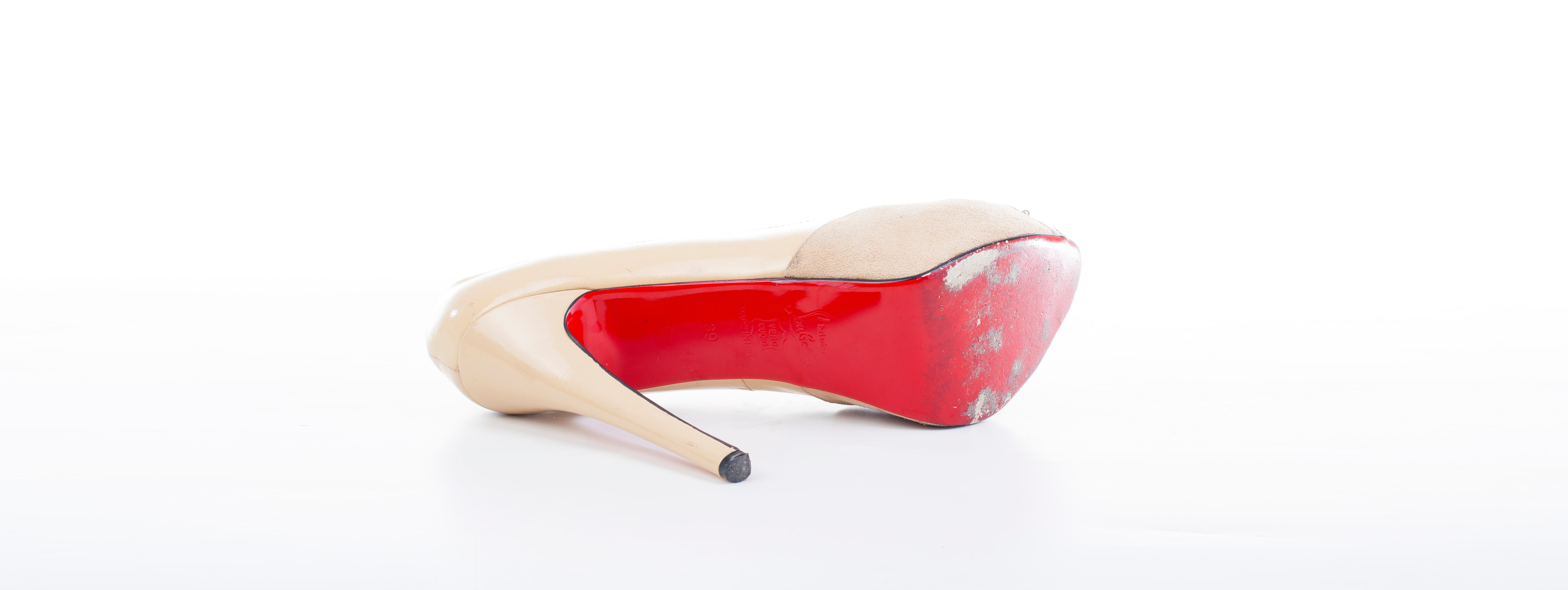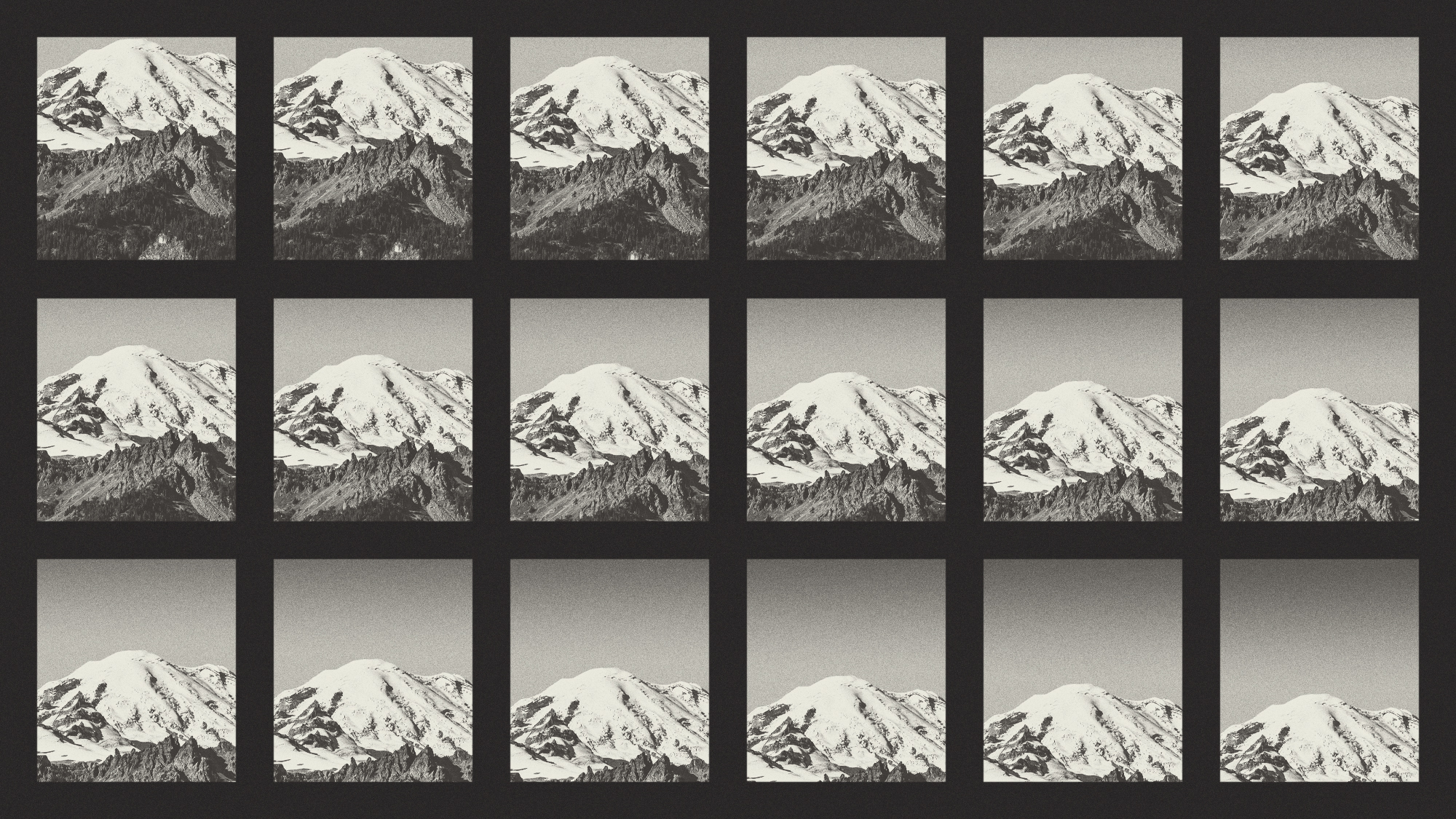The rise and fall of the nude pump
"Professional" femininity seems to be quickly falling out of fashion


In May of this year, writer Gabriella Paiella called Ivanka Trump "a sentient patent nude pump." I thought about this line after Louise Linton, the wife of Treasury Secretary Steven Mnuchin, posted that photo of herself getting off a government plane. In the photo — which you've probably seen — Linton steps onto the pavement in a pair of nude Valentino Rockstud pumps.
Nude pumps signify a polished, "professional" femininity that seems to be quickly falling out of fashion. You know the look: sausage curls, heavy blush (preferably NARS's infamous gold-flecked peach shade "Orgasm"). Sheath dresses and statement necklaces and a J. Crew trench coat and a Michael Kors bag, or perhaps, if you're really fortunate, a Louis Vuitton. It's a look particularly prevalent in the Washington, D.C., neighborhoods where people "work on the Hill." It's also popular among local newscasters, Real Housewives, and female hosts of the Today show.
The women in and around the Trump administration love a nude pump. Ivanka Trump is frequently photographed wearing them, as are Melania and Kellyanne Conway. Ivanka's eponymous shoe line even features several styles in this color: stilettos, chunky heels, round-toed pumps, court shoes with pointed toes. They come in matte and patent finishes, and are supposed to resemble your skin tone.
The Week
Escape your echo chamber. Get the facts behind the news, plus analysis from multiple perspectives.

Sign up for The Week's Free Newsletters
From our morning news briefing to a weekly Good News Newsletter, get the best of The Week delivered directly to your inbox.
From our morning news briefing to a weekly Good News Newsletter, get the best of The Week delivered directly to your inbox.
The genius of the nude pump is how it blends the two defining traits of the "professional" costume: its high maintenance and inconspicuousness.
The best definition of the female "professional" aesthetic I've seen comes from Autumn Whitefield-Madrano. "Looking professional revolves around labor," she argues. It means getting expensive haircuts and purchasing expensive styling products, but at the same time, your hair color and style must appear "natural." It must not draw too much attention to itself, which would mean drawing attention to the labor that went into creating and maintaining it. A beehive would not be "professional," at least in the colloquial sense, nor would purple hair. Makeup is definitely required, but it must be "natural" makeup, not, say, blue eyeshadow. Having a manicure is nice, but your nails must not be stiletto nails encrusted with rhinestones. Beige or subtle pink — these are workplace-appropriate.
Looking professional is expensive, accommodationist, and emotionally taxing. Beyond looking professional, the worker (regardless of gender) must be professional. This means suppressing emotions and even opinions, and adopting a flat, "competent" affect. It means smiling but not too much. It is very complicated.
The nude pump is an ideal synecdoche for all these expectations. High heels have long been tacitly understood to be the most "professional" choice in women's footwear. Some workplaces — including those of law and accounting firms — even require them. Sure, high heels are uncomfortable and hinder the wearer's natural range of motion, and sure, they can cause lasting muscle and spine damage. But again, such consequences are a small price to pay for the right to earn a salary. The nude pump — which is definitionally the color of the wearer's skin, or close to it — draws attention away from all this. It is there, acting as a stamp of femininity, but a quiet one. A nude pump is unlikely to offend anyone. "Oh, these old things?"
A free daily email with the biggest news stories of the day – and the best features from TheWeek.com
This particular style of footwear seems to to have originated with upscale shoe designer Christian Louboutin. The look became popular with Kim Kardashian, Michelle Obama, and, most famously, Kate Middleton, who wore her nude LK Bennett Sledge pumps so often that The Daily Mail christened her "the reigning Queen of Nude Shoes."
So yes, the style has an unquestionable celebrity pedigree. But it also seems inextricably tied to a particular attitude towards professional aesthetics that has recently found itself degraded.
I began to notice women wearing nude pumps during Barack Obama's first term in office. This isn't just an anecdotal observation. If you look up "nude pumps" on Google Trends, searches for both "nude shoes" and "nude pumps" began to rise in 2008. Each year, searches spiked in the summer and fell in the winter. Broadly speaking, the trend seems to have reached its pinnacle in the summer of 2011, and has since been on the decline.
In fact, it was the summer preceding Occupy Wall Street that nude pumps peaked in popularity. Looking back, I think that year marked a sea change not only in leftist politics, but popular fashion, too. Occupy Wall Street was followed by the mass appropriation of feminism by popular and consumer culture, the rise of Black Lives Matter in the summer and fall of 2014, and, finally, the election of Donald Trump and the attendant mass protests.
Radical concerns and radical, in-your-face aesthetics filtered up into mass culture, including fashion. Luxury garments reading "feminist" or "smash the patriarchy" proliferated. Now, you can buy a Rachel Antonoff sweater decorated with uteruses and crocheted tampons. More subtly, the minimalist sprezzatura long popular among academics and radicals seemed to proliferate. Think all black, minimal (if any) makeup, Chelsea boots, tattoos, the odd septum ring or conch piercing. Think body hair.
Where femininity, in the traditional sense, does show up in young professional circles these days, it is often in its high form — unapologetic fuschia and berry lipstick, Dusen-Dusen-esque Memphis patterns or fruit prints. This type of femininity is unapologetically present and demands an acknowledgement of the labor that goes into dressing "like a woman."
Amid all this, what are we to make of Ivanka, the "sentient patent nude pump?" One could argue she hasn't quite gotten the memo. Women who work are simply not interested in #womenwhowork. Across America, they are shelving their nude pumps and lacing up their stomping boots.
Colette Shade's writing has appeared in publications including Current Affairs, The New Republic, Jacobin, and The Baffler. She is currently finishing a novel called The Blessing of the Hounds.
-
 Has Zohran Mamdani shown the Democrats how to win again?
Has Zohran Mamdani shown the Democrats how to win again?Today’s Big Question New York City mayoral election touted as victory for left-wing populists but moderate centrist wins elsewhere present more complex path for Democratic Party
-
 Millions turn out for anti-Trump ‘No Kings’ rallies
Millions turn out for anti-Trump ‘No Kings’ ralliesSpeed Read An estimated 7 million people participated, 2 million more than at the first ‘No Kings’ protest in June
-
 Ghislaine Maxwell: angling for a Trump pardon
Ghislaine Maxwell: angling for a Trump pardonTalking Point Convicted sex trafficker's testimony could shed new light on president's links to Jeffrey Epstein
-
 The last words and final moments of 40 presidents
The last words and final moments of 40 presidentsThe Explainer Some are eloquent quotes worthy of the holders of the highest office in the nation, and others... aren't
-
 The JFK files: the truth at last?
The JFK files: the truth at last?In The Spotlight More than 64,000 previously classified documents relating the 1963 assassination of John F. Kennedy have been released by the Trump administration
-
 'Seriously, not literally': how should the world take Donald Trump?
'Seriously, not literally': how should the world take Donald Trump?Today's big question White House rhetoric and reality look likely to become increasingly blurred
-
 Will Trump's 'madman' strategy pay off?
Will Trump's 'madman' strategy pay off?Today's Big Question Incoming US president likes to seem unpredictable but, this time round, world leaders could be wise to his playbook
-
 Democrats vs. Republicans: who are US billionaires backing?
Democrats vs. Republicans: who are US billionaires backing?The Explainer Younger tech titans join 'boys' club throwing money and support' behind President Trump, while older plutocrats quietly rebuke new administration



